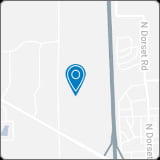What is a Stye?
A stye (or sty) is an infection of a gland or eyelash follicle that forms a red, sore lump at the eyelid’s edge. Styes are very painful and cause the entire eyelid to become red and swollen.1
Stye Symptoms
Common symptoms associated with styes include:
- Red, painful bump on the edge of the eyelid or at the base of an eyelash
- Watery or crusty eye
- Light sensitivity
- Swelling of the eyelid
- An eye that feels sore or gritty
Stye Causes
Styes are caused by a bacterial infection. They occur when bacteria enter the follicle of an eyelash or the oil-producing eyelid glands.
Certain factors may make a person more likely to develop a stye, such as:
- A history of styes
- Blepharitis
- Acne, rosacea, or dermatitis
- Dry skin
- High cholesterol
- Hormonal changes
- Diabetes
Stye Treatment
In many cases, styes resolve on their own within a few days. There are a number of steps patients can take at home to relieve the pain and swelling caused by styes. Home treatments may include soaking with a warm compress and using baby shampoo and water or over-the-counter eyelid wipes to clean the area.
More severe styes may require treatment with steroid injections, antibiotic ointment, prescription eye drops, or other medications. Some styes also need to be drained by an eye doctor.
What is a Chalazion?
A chalazion is a bump that appears on either the upper or lower eyelid, often resembling a pea-like lump under the eyelid skin. Unlike a stye, a chalazion is not caused by infection and is typically not painful.2Chalazion Symptoms A chalazion typically first appears as a localized, red, tender area on the eyelid that changes into a slow-growing lump. Occasionally, a chalazion will cause the entire eyelid to swell.

Chalazion Causes
Our eyelids contain many glands that are located just behind the base of the eyelashes. Meibomian glands secrete oil that helps prevent the evaporation of tears from our tear film. When these glands become clogged, a chalazion can form.
Anyone can develop a chalazion, though they do tend to be more common in people with chronic inflammation of oil glands on the eyelid (blepharitis), acne, rosacea, seborrheic dermatitis, other skin conditions, or diabetes.
Chalazion Treatment
A small chalazion usually resolves and disappears on its own, in a few weeks to a month. Warm compresses applied several times a day for 10 minutes can help soften and unblock the glands and lead to quicker resolution. A larger chalazion that could also cause excess tearing and blurred vision typically needs medical treatment. Treatment can include antibiotic ointments, anti-inflammatory medication, steroid drops or injections, and (less commonly) in-office surgical drainage. Chalazia usually respond well to treatment, though resolution may not be complete for several weeks to several months.
Contact CVP Physicians Dayton
If you have a lump on your eyelid, it may be due to infection (a stye) or inflammation (a chalazion). The highly skilled eye care professionals at CVP Physicians Dayton can provide proper diagnosis and the right treatment plan for you. To make an appointment, please contact us today.
1 Cleveland Clinic. Sty (Stye). Available: https://my.clevelandclinic.org/health/diseases/17658-sty-stye. Accessed June 9, 2020.
2 American Academy of Ophthalmologists. What are Chalazia and Styes?. Available: https://www.aao.org/eye-health/diseases/what-are-chalazia-styes. Accessed June 9, 2020.




